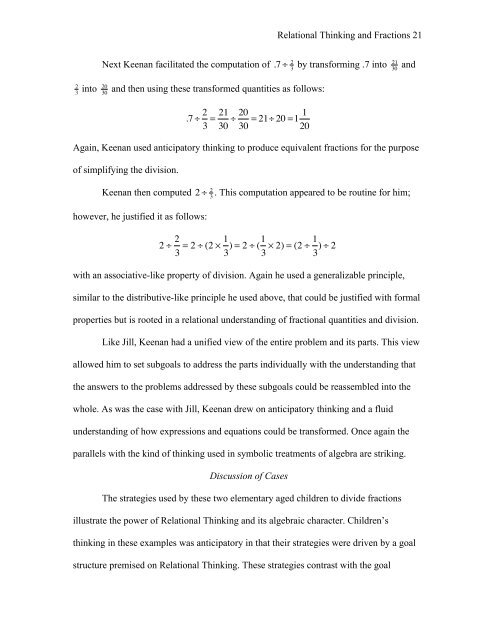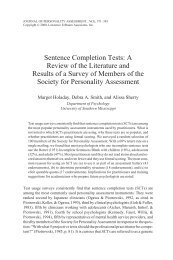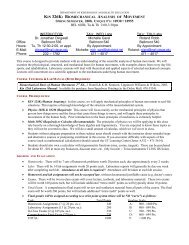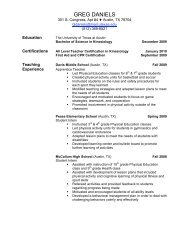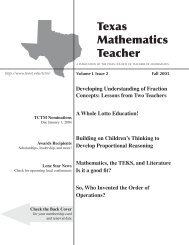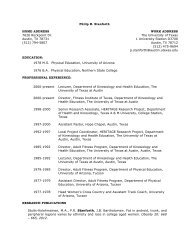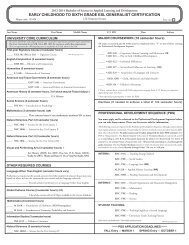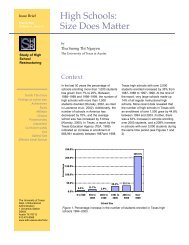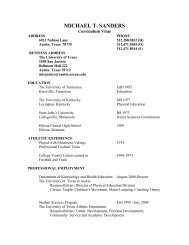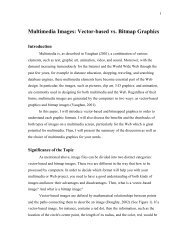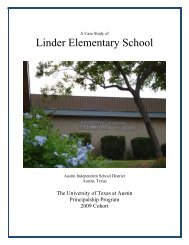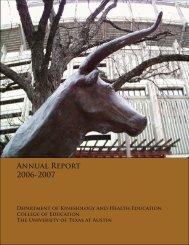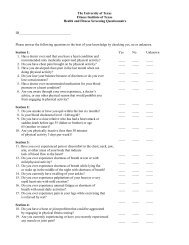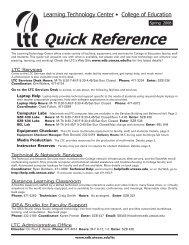The Algebraic Nature of Fractions: Developing Relational Thinking ...
The Algebraic Nature of Fractions: Developing Relational Thinking ...
The Algebraic Nature of Fractions: Developing Relational Thinking ...
You also want an ePaper? Increase the reach of your titles
YUMPU automatically turns print PDFs into web optimized ePapers that Google loves.
2<br />
3 into<br />
Next Keenan facilitated the computation <strong>of</strong><br />
20<br />
30<br />
<strong>Relational</strong> <strong>Thinking</strong> and <strong>Fractions</strong> 21<br />
.7 ÷ 2<br />
3<br />
and then using these transformed quantities as follows:<br />
.7 ÷ 2 21 20<br />
1<br />
= ÷ = 21 ÷ 20 =1<br />
3 30 30 20<br />
by transforming .7 into<br />
21<br />
30 and<br />
Again, Keenan used anticipatory thinking to produce equivalent fractions for the purpose<br />
<strong>of</strong> simplifying the division.<br />
Keenan then computed<br />
however, he justified it as follows:<br />
2 ÷ 2<br />
3<br />
2 ÷ 2 . This computation appeared to be routine for him;<br />
3<br />
1<br />
= 2 ÷ (2 × ) = 2 ÷ (1<br />
3 3<br />
1<br />
× 2) = (2 ÷ ) ÷ 2<br />
3<br />
with an associative-like property <strong>of</strong> division. Again he used a generalizable principle,<br />
similar to the distributive-like principle he used above, that could be justified with formal<br />
properties but is rooted in a relational understanding <strong>of</strong> fractional quantities and division.<br />
Like Jill, Keenan had a unified view <strong>of</strong> the entire problem and its parts. This view<br />
allowed him to set subgoals to address the parts individually with the understanding that<br />
the answers to the problems addressed by these subgoals could be reassembled into the<br />
whole. As was the case with Jill, Keenan drew on anticipatory thinking and a fluid<br />
understanding <strong>of</strong> how expressions and equations could be transformed. Once again the<br />
parallels with the kind <strong>of</strong> thinking used in symbolic treatments <strong>of</strong> algebra are striking.<br />
Discussion <strong>of</strong> Cases<br />
<strong>The</strong> strategies used by these two elementary aged children to divide fractions<br />
illustrate the power <strong>of</strong> <strong>Relational</strong> <strong>Thinking</strong> and its algebraic character. Children’s<br />
thinking in these examples was anticipatory in that their strategies were driven by a goal<br />
structure premised on <strong>Relational</strong> <strong>Thinking</strong>. <strong>The</strong>se strategies contrast with the goal


